-
 Effect of Friction Reducers with Unreinforced PEEK and Steel Counterparts in Oil Lubrication
Effect of Friction Reducers with Unreinforced PEEK and Steel Counterparts in Oil Lubrication -
 Predicting Wear under Boundary Lubrication: A Decisive Statistical Study
Predicting Wear under Boundary Lubrication: A Decisive Statistical Study -
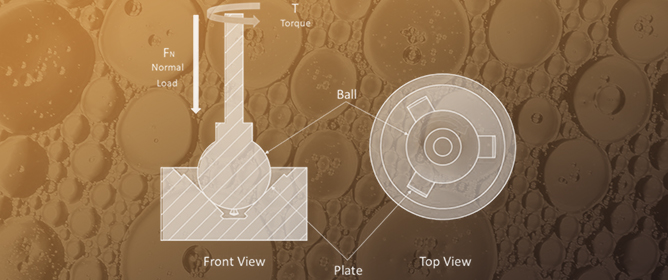 Enhancing the Performance of Rapeseed Oil Lubricant for Machinery Component Applications through Hybrid Blends of Nanoadditives
Enhancing the Performance of Rapeseed Oil Lubricant for Machinery Component Applications through Hybrid Blends of Nanoadditives -
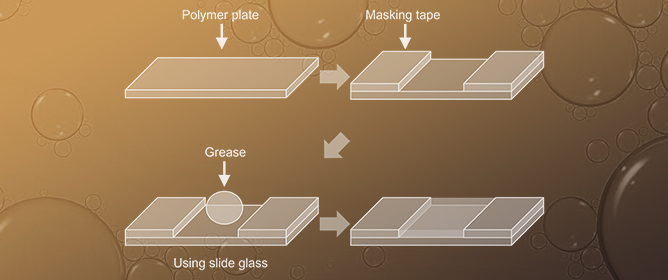 Effect of Speed and Number of Sliding Cycles on the Film Formation Behavior of Fluorine-Based Grease
Effect of Speed and Number of Sliding Cycles on the Film Formation Behavior of Fluorine-Based Grease
Journal Description
Lubricants
Lubricants
is an international, peer-reviewed, open access journal on tribology published monthly online by MDPI.
- Open Access— free for readers, with article processing charges (APC) paid by authors or their institutions.
- High Visibility: indexed within Scopus, SCIE (Web of Science), Inspec, CAPlus / SciFinder, and other databases.
- Journal Rank: JCR - Q2 (Engineering, Mechanical) / CiteScore - Q2 (Mechanical Engineering)
- Rapid Publication: manuscripts are peer-reviewed and a first decision is provided to authors approximately 14.8 days after submission; acceptance to publication is undertaken in 3.5 days (median values for papers published in this journal in the second half of 2023).
- Recognition of Reviewers: reviewers who provide timely, thorough peer-review reports receive vouchers entitling them to a discount on the APC of their next publication in any MDPI journal, in appreciation of the work done.
Impact Factor:
3.5 (2022);
5-Year Impact Factor:
3.2 (2022)
Latest Articles
Analysis of Thermo-Hydrodynamic Lubrication of Three-Lobe Semi-Floating Ring Bearing Considering Temperature–Viscosity Effect and Static Pressure Flow
Lubricants 2024, 12(4), 140; https://0-doi-org.brum.beds.ac.uk/10.3390/lubricants12040140 - 18 Apr 2024
Abstract
►
Show Figures
High-power diesel engine turbochargers predominantly utilize floating ring bearings as their primary supporting components. To further enhance their load capacity, multi-lobe noncircular bearings have been progressively employed. This study focuses on the investigation of noncircular three-lobe SFRBs (semi-floating ring-bearing structures) in marine turbochargers.
[...] Read more.
High-power diesel engine turbochargers predominantly utilize floating ring bearings as their primary supporting components. To further enhance their load capacity, multi-lobe noncircular bearings have been progressively employed. This study focuses on the investigation of noncircular three-lobe SFRBs (semi-floating ring-bearing structures) in marine turbochargers. Employing the half-step center Finite Difference Method (FDM) and the Newton–Raphson iterative procedure, the impact of operational parameters such as the journal speed, external load, oil supply pressure, and oil supply temperature on the static and dynamic characteristics of the inner oil film is analyzed. Subsequently, the accuracy of the theoretical model is validated through a comparative analysis of simulation results obtained from Dyrobes and Fluent. The findings indicate that as the oil supply pressure and temperature increase, the temperature rise and maximum oil film pressure of the three-lobe SFRBs gradually decrease, while the oil film thickness progressively increases, thereby significantly improving the lubrication state. The load capacity of the three-lobe SFRBs is primarily sustained by the bottom tile, where wall friction is most likely to occur. Additionally, within the actual speed range, the stiffness and damping of the three-lobe SFRBs exhibit noticeable nonlinear characteristics.
Full article
Open AccessArticle
Mechanical and Tribological Behaviour of Surface-Graphitised Al-1100 Alloy
by
Baidehish Sahoo, Jinu Paul and Abhishek Sharma
Lubricants 2024, 12(4), 139; https://0-doi-org.brum.beds.ac.uk/10.3390/lubricants12040139 - 18 Apr 2024
Abstract
►▼
Show Figures
This study details the mechanical incorporation of graphite particles into the surface of aluminium (Al-1100) to fabricate surface composites using an electrical resistance heating-assisted pressing method. Initially, the aluminium surface is coated with graphite via solution casting. Incorporation is accomplished by locally heating
[...] Read more.
This study details the mechanical incorporation of graphite particles into the surface of aluminium (Al-1100) to fabricate surface composites using an electrical resistance heating-assisted pressing method. Initially, the aluminium surface is coated with graphite via solution casting. Incorporation is accomplished by locally heating the graphite–aluminium interface with electrical resistance heating and subsequent mechanical pressure application. The magnitude of softening of the aluminium surface can be regulated by process considerations such as the applied current and heating duration. Microstructural assessment of the aluminium–graphite composite was conducted using SEM, TEM, Raman spectroscopy, and XRD. The surface mechanical properties and reduced Young’s modulus were improved by more than 200% and 150%, respectively. A detailed tribological study was conducted, and the study suggested that the wear resistance and COF improved by more than 50%. The progress in wear resistance and COF is corroborated by the microstructural changes in the matrix suggested by the Raman spectroscopy and XRD results.
Full article
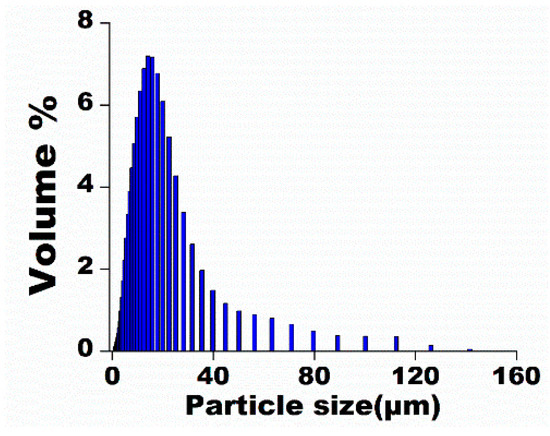
Figure 1
Open AccessReview
Structural Superlubricity of Two-Dimensional Materials: Mechanisms, Properties, Influencing Factors, and Applications
by
Fan-Bin Wu, Sheng-Jian Zhou, Jia-Hu Ouyang, Shu-Qi Wang and Lei Chen
Lubricants 2024, 12(4), 138; https://0-doi-org.brum.beds.ac.uk/10.3390/lubricants12040138 - 18 Apr 2024
Abstract
Structural superlubricity refers to the lubrication state in which the friction between two crystalline surfaces in incommensurate contact is nearly zero; this has become an important branch in recent tribological research. Two-dimensional (2D) materials with structural superlubricity such as graphene, MoS2,
[...] Read more.
Structural superlubricity refers to the lubrication state in which the friction between two crystalline surfaces in incommensurate contact is nearly zero; this has become an important branch in recent tribological research. Two-dimensional (2D) materials with structural superlubricity such as graphene, MoS2, h-BN, and alike, which possess unique layered structures and excellent friction behavior, will bring significant advances in the development of high-performance microelectromechanical systems (MEMS), as well as in space exploration, space transportation, precision manufacturing, and high-end equipment. Herein, the review mainly introduces the tribological properties of structural superlubricity among typical 2D layered materials and summarizes in detail the underlying mechanisms responsible for superlubricity on sliding surfaces and the influencing factors including the size and layer effect, elasticity effect, moiré superlattice, edge effect, and other external factors like normal load, velocity, and temperature, etc. Finally, the difficulties in achieving robust superlubricity from micro to macroscale were focused on, and the prospects and suggestions were discussed.
Full article
(This article belongs to the Special Issue 2D Materials in Tribology)
►▼
Show Figures
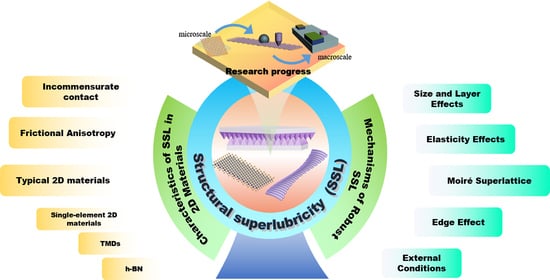
Graphical abstract
Open AccessArticle
Effect of Copper Nanoparticles Surface-Capped by Dialkyl Dithiophosphate on Different Base Oil Viscosity
by
Xufei Wang, Shuguang Fan, Ningning Song, Laigui Yu, Yujuan Zhang and Shengmao Zhang
Lubricants 2024, 12(4), 137; https://0-doi-org.brum.beds.ac.uk/10.3390/lubricants12040137 - 18 Apr 2024
Abstract
In order to more accurately characterize the effects of nanoparticles on lubricant viscosity, the effects of copper dialkyl dithiophosphate (HDDP)-modified (CuDDP) nanoparticles on the dynamic viscosity of mineral oils 150N, alkylated naphthalene (AN5), diisooctyl sebacate (DIOS), and polyalphaolefins (PAO4, PAO6, PAO10, PAO40, and
[...] Read more.
In order to more accurately characterize the effects of nanoparticles on lubricant viscosity, the effects of copper dialkyl dithiophosphate (HDDP)-modified (CuDDP) nanoparticles on the dynamic viscosity of mineral oils 150N, alkylated naphthalene (AN5), diisooctyl sebacate (DIOS), and polyalphaolefins (PAO4, PAO6, PAO10, PAO40, and PAO100) were investigated at an experimental temperature of 40 °C and additive mass fraction ranging from 0.5% to 2.5%. CuDDP exhibits a viscosity-reducing effect on higher-viscosity base oils, such as PAO40 and PAO100, and a viscosity-increasing effect on lower-viscosity base oils, namely, 150N, AN5, DIOS, PAO4, PAO6, and PAO10. These effects can be attributed to the interfacial slip effect and the shear resistance of the nanoparticles. The experimental dynamic viscosity of the eight base oils containing CuDDP was compared with that calculated by the three classical formulae of nanofluid viscosity, The predicted viscosity values of the formulae deviated greatly from the experimental viscosity values, with the maximum deviation being 7.9%. On this basis, the interface slip effect was introduced into Einstein’s formula, the interface effect was quantified with the aniline point of the base oil, and a new equation was established to reflect the influence of CuDDP nanoparticles on lubricating oil viscosity. It can better reflect the influence of CuDDP on the viscosity of various base oils, and the deviation from the experimental data is less than 1.7%.
Full article
(This article belongs to the Special Issue Functional Lubricating Materials)
►▼
Show Figures
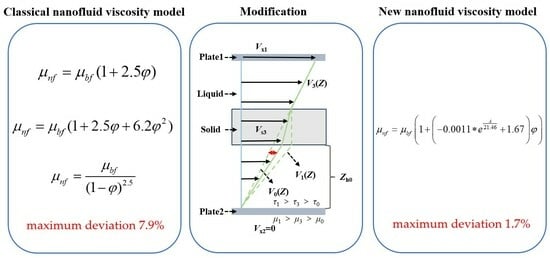
Graphical abstract
Open AccessArticle
The Effect of Lubricant’s Viscosity on Reducing the Frictional-Induced Fluctuation on the Onset of Friction
by
Shutian Liu, Juncheng Lv and Chuanbo Liu
Lubricants 2024, 12(4), 136; https://0-doi-org.brum.beds.ac.uk/10.3390/lubricants12040136 - 17 Apr 2024
Abstract
The initial friction stage between the contacting materials would generate a maximum shear force and an unstable fluctuating time, which had a negative effect on the entire frictional system, especially at low temperature conditions. In order to decrease the occurring shear force and
[...] Read more.
The initial friction stage between the contacting materials would generate a maximum shear force and an unstable fluctuating time, which had a negative effect on the entire frictional system, especially at low temperature conditions. In order to decrease the occurring shear force and fluctuating time on the onset of friction, two different lubricating oils were applied in this study to investigate the influence of lubricant’s viscosity on these friction behaviors. The frictional experiments were conducted between the steel ball and the 40CrMnMo, and special attention was paid to the relationship between maximum friction force, fluctuating time, frictional vibration and the initial lubricant temperature. The results showed that the friction force first increased to the maximum value and then experienced an oscillation damping period (fluctuating time) before it reached a stable state. And this fluctuating behavior caused corresponding vibrations on the initial contacting. However, compared to the high viscosity lubricating oil (HO), the low viscosity lubricating oil (LO) contributed to more than 50% reductions on max friction force, fluctuating time and vibration at the cold start (0 °C). Moreover, the weakened initial frictional fluctuation was conducive to generating a low and stable friction coefficient (COF) and wear loss of the long-term test. The discrepancy on lubricating performance was that the low viscosity provided high fluidity, which allowed rapid distribution of the lubricant between the contacting surfaces and formed an intact lubricating film. Similarly, the high temperature decreased the viscosity of HO and thus led to satisfactory friction reductions. The knowledge gained herein provides a supporting theory on the design and preparation of a lubricating oil with high performance.
Full article
(This article belongs to the Special Issue Friction–Vibration Interactions)
►▼
Show Figures
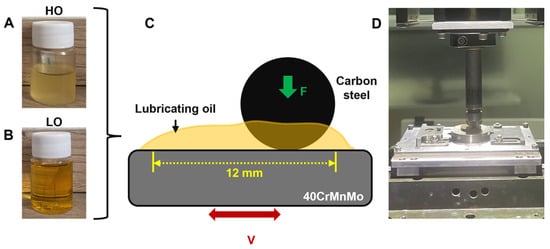
Figure 1
Open AccessArticle
Effect of Sodium Alkane Sulfonate Addition on Tribological Properties of Emulsion for Cold Rolling Strips: Experimental and Simulation Investigations
by
Daoxin Su, Jianlin Sun, Erchao Meng, Yueting Xu and Mengxiao Zhang
Lubricants 2024, 12(4), 135; https://0-doi-org.brum.beds.ac.uk/10.3390/lubricants12040135 - 17 Apr 2024
Abstract
►▼
Show Figures
Cold rolling emulsion contains a variety of functional additives, which often exhibit complex interactions with each other. Sodium alkane sulfonate (SAS) is a common corrosion inhibitor used in cold rolling emulsions for temporary rust prevention. In this study, it was found that SAS
[...] Read more.
Cold rolling emulsion contains a variety of functional additives, which often exhibit complex interactions with each other. Sodium alkane sulfonate (SAS) is a common corrosion inhibitor used in cold rolling emulsions for temporary rust prevention. In this study, it was found that SAS would deteriorate the tribological properties of the emulsion. Emulsions containing SAS and different friction modifiers were prepared. Tribology tests were carried out on a four-ball friction and wear tester. White light interferometer was used to investigate the 3D morphology of the friction surface and wear volume. Microscopic morphology of friction surfaces was observed using a scanning electron microscope (SEM). The chemical activity and electrostatic potential of the molecules were calculated based on density functional theory (DFT). The adsorption energies of additives on metal surfaces were calculated via molecular dynamics (MD) simulation. The results indicate that the strong electrostatic force gives SAS an advantage in competitive adsorption with ester friction modifiers due to the positive charge on the metal surface. This results in the friction modifier not functioning properly and the tribological properties of the emulsion being significantly reduced.
Full article

Figure 1
Open AccessArticle
Pin-on-Plate vs. Pin-on-Disk Wear Tests: Theoretical and Numerical Observations on the Initial Transient Phase
by
Francesca Di Puccio, Andrea Di Pietro and Lorenza Mattei
Lubricants 2024, 12(4), 134; https://0-doi-org.brum.beds.ac.uk/10.3390/lubricants12040134 - 17 Apr 2024
Abstract
►▼
Show Figures
Pin-on-plate and pin-on-disk wear tests are typically used for assessing the wear behavior of a given material coupling and estimating its wear coefficient using the Archard wear law. This study investigates differences in the Archard law for pin-on-plate and pin-on-disk cases, particularly for
[...] Read more.
Pin-on-plate and pin-on-disk wear tests are typically used for assessing the wear behavior of a given material coupling and estimating its wear coefficient using the Archard wear law. This study investigates differences in the Archard law for pin-on-plate and pin-on-disk cases, particularly for flat-ended pins. Both analytical and finite element models of the two tests were developed, assuming a 21 N normal load and a 50π mm sliding distance. In pin-on-disk simulations three different distances between pin and disk axes were considered, i.e., 1.25–2.5–5 times the pin radius (5 mm). For the results, wear volumes, pressure and wear depth maps were compared. Some interesting aspects arose: (i) the rotational effect in pin-on-disk tests causes higher wear volumes (up to 13%) with respect to pin-on-plate tests: the nearer the pin to the disk axis, the higher the wear volume; (ii) a simple quadratic formula is defined to correct the wear volume estimation for pin-on-disk tests; (iii) pressure redistribution occurs with higher values closer to disk axis, opposite to the wear depth trend. Due to the high computational costs, only the running-in phase of wear tests was considered. Numerical strategies are currently under investigation to extend this study to the steady state phase.
Full article
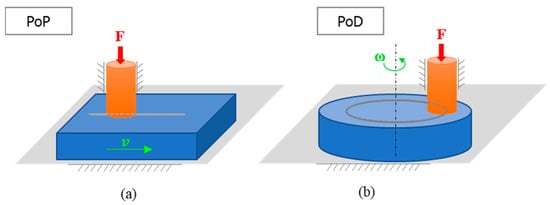
Figure 1
Open AccessArticle
Oil–Air Two-Phase Flow Distribution Characteristics inside Cylindrical Roller Bearing with Under-Race Lubrication
by
Wenjun Gao, Can Li, Yuanhao Li, Zhenxia Liu and Yaguo Lyu
Lubricants 2024, 12(4), 133; https://0-doi-org.brum.beds.ac.uk/10.3390/lubricants12040133 - 16 Apr 2024
Abstract
A deep understanding of oil behavior inside roller bearings is important for the precise design of bearing configurations and oil systems in aircraft engines. The numerical method is employed to track oil distribution inside cylindrical roller bearings with under-race lubrication along the circumference
[...] Read more.
A deep understanding of oil behavior inside roller bearings is important for the precise design of bearing configurations and oil systems in aircraft engines. The numerical method is employed to track oil distribution inside cylindrical roller bearings with under-race lubrication along the circumference and radial direction, respectively. The results demonstrate that oil distribution along the circumference is periodic with the number of under-race nozzles, and higher rotating speed and lower flow rate would reduce the fluctuation amplitude. It is difficult for oil to flow through the gap between the cage pocket and rollers, and higher oil viscosity would worsen it further. In some extreme cases, the oil volume fraction near the outer race may be lower than 0.7%, causing the risk of lubricating and cooling failure. Thus, more attention should be paid to the outer race of the roller bearing with under-race lubrication, especially during the starting stage of the engine and in cold weather.
Full article
(This article belongs to the Special Issue Tribological Study in Rolling Bearing)
►▼
Show Figures
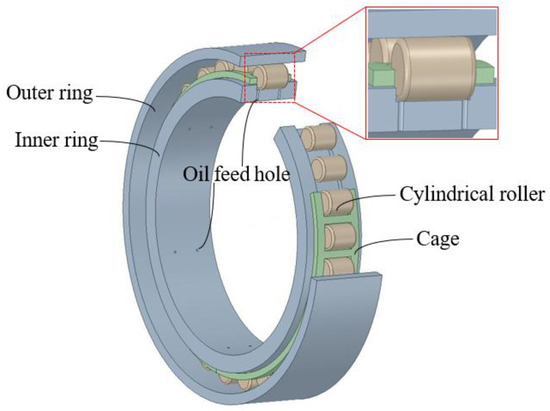
Figure 1
Open AccessArticle
Experimental Investigation of a Free-Form Honed Cylinder Liner for Heavy-Duty Engines
by
Frederik Stelljes, Florian Pohlmann-Tasche and Friedrich Dinkelacker
Lubricants 2024, 12(4), 132; https://0-doi-org.brum.beds.ac.uk/10.3390/lubricants12040132 - 16 Apr 2024
Abstract
For future internal combustion engines, driven by regenerative fuels, efficiency is more important than ever. One approach to reduce the losses inside the piston cylinder unit (PCU) is to improve the alignment of the liner and the piston. Therefore, a cylinder liner with
[...] Read more.
For future internal combustion engines, driven by regenerative fuels, efficiency is more important than ever. One approach to reduce the losses inside the piston cylinder unit (PCU) is to improve the alignment of the liner and the piston. Therefore, a cylinder liner with a free form was developed at the Institute of Technical Combustion (ITV) of the Leibniz University Hannover which compensates radial and linear deformations along the stroke. The layout is based on a FEM simulation. The liner was manufactured by the Institute of Production Engineering and Machine Tools (IFW) of Leibniz University of Hannover with a novel turn-milling process. The liner was investigated on the heavy-duty Floating-Liner engine of ITV with a displacement of 1991 ccm and a bore diameter of 130 mm. The experimental results show improvement in the friction losses over the whole engine map in the range of 9% and up to 17.3% compared to a serial liner. Sealing efficiency could be improved up to 28.8%, depending on the operational point. Overall, the investigation aims for lower fuel consumption which would in result fewer emissions.
Full article
(This article belongs to the Special Issue Tackling Emissions from the Internal Combustion Engine: Advances in Piston/Bore Tribology)
►▼
Show Figures

Figure 1
Open AccessArticle
Ni-Cu Alloyed Austempered Ductile Iron Resistance to Multifactorial Wear
by
Andrzej Norbert Wieczorek
Lubricants 2024, 12(4), 131; https://0-doi-org.brum.beds.ac.uk/10.3390/lubricants12040131 - 15 Apr 2024
Abstract
►▼
Show Figures
The paper provides a discussion on the results of studies of the effect exerted by combined degradation factors typical of four types of wear: abrasion, impact–abrasion, tribocorrosion, and impact–abrasion–corrosion, conducted for chain wheels made of Ni-Cu alloyed austempered ductile iron. The studies consisted
[...] Read more.
The paper provides a discussion on the results of studies of the effect exerted by combined degradation factors typical of four types of wear: abrasion, impact–abrasion, tribocorrosion, and impact–abrasion–corrosion, conducted for chain wheels made of Ni-Cu alloyed austempered ductile iron. The studies consisted of determining the content of retained austenite in the structure of the cast irons in question, establishing the measures of wear following wear testing, and identifying the basic surface degradation mechanisms observed in the chain wheels tested following multifactorial wear processes. The chain wheels made of ADI were found to have sustained the greatest damage under the impact–abrasion–corrosion (three-factor) wear scenario, while the wear was least advanced in the abrasion (one-factor) wear case. Another observation derived from the studies is that the combined effect of dynamic forces, corrosion, and quartz sand-based abrasives causes increased surface degradation in the cast iron grades taken into consideration compared to processes characterised by a reduced number of degradation factors (i.e., one- or two-factor wear processes). Additional hardness tests and XRD analyses revealed that a distinctive effect attributable to combined degradation factors on the surface hardness increased value and implied that bench testing was followed by phase transition.
Full article

Figure 1
Open AccessArticle
Friction Characteristics and Lubrication Properties of Spherical Hinge Structure of Swivel Bridge
by
Yingsong Li, Wei Guo, Xiaoming Huang, Zeqi Chen and Ying Gao
Lubricants 2024, 12(4), 130; https://0-doi-org.brum.beds.ac.uk/10.3390/lubricants12040130 - 15 Apr 2024
Abstract
A spherical hinge structure is a key swivel bridge element that must be considered when evaluating friction characteristics and lubrication properties to meet the rotation requirement. Polytetrafluoroethylene (PTFE)-based spherical hinge sliders and lubrication coating have been employed for over 20 years, but with
[...] Read more.
A spherical hinge structure is a key swivel bridge element that must be considered when evaluating friction characteristics and lubrication properties to meet the rotation requirement. Polytetrafluoroethylene (PTFE)-based spherical hinge sliders and lubrication coating have been employed for over 20 years, but with the growing tonnage of swivel bridge construction, their capacity to accommodate the required lubrication properties can be exceeded. In this manuscript, the optimal friction coefficient of the spherical hinge is obtained through the finite element analysis method. Four lubrication coatings and four spherical hinge sliders are prepared and tested through a self-developed rotation friction coefficient test, four-ball machine test, dynamic shear rheological test, and compression and shear performance test to evaluate the lubrication and friction properties of the spherical hinge structure. The results of the finite element analysis show that the optimum rotation friction coefficient of the spherical hinge structure is 0.031–1.131. The test results illustrate that the friction coefficient, wear scar diameter, maximum non-seize load, phase transition point, and thixotropic ring area of graphene lubrication coating are 0.065, 0.79 mm, 426 N, 14.6%, and 64,878 Pa/s. The graphene lubrication coating has different degrees of improvement compared with conventional polytetrafluoroethylene lubrication coating, showing more excellent lubrication properties, bearing capacity, thixotropy, and structural strength. Compressive and shear tests demonstrate that polyether ether ketone (PEEK) has good compressive and shear mechanical properties. The maximum compressive stress of PEEK is 87.7% higher than conventional PTFE, and the shear strength of PEEK is 6.07 times higher than that of PTFE. The research results can provide significantly greater wear resistance and a lower friction coefficient of the spherical hinge structure, leading to lower traction energy consumption and ensuring smooth and precise bridge rotation.
Full article
(This article belongs to the Special Issue Additives for Lubricating Oil and Grease: Mechanism, Properties and Applications)
►▼
Show Figures
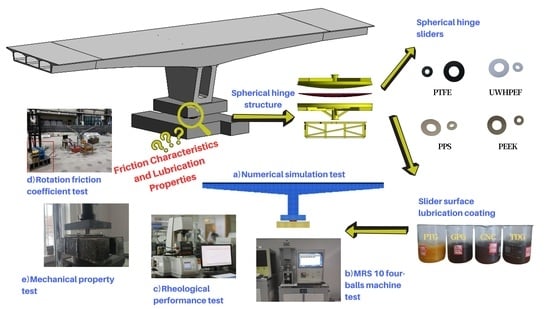
Graphical abstract
Open AccessArticle
The Induced Orientation of Hydroxypropyl Methylcellulose Coating for Ultralow Wear
by
Haosheng Pang, Jianxun Xu, Huan Liu, Wenjuan Wang, Xuan Yin, Dameng Liu and Bing Zhang
Lubricants 2024, 12(4), 129; https://0-doi-org.brum.beds.ac.uk/10.3390/lubricants12040129 - 15 Apr 2024
Abstract
►▼
Show Figures
This study investigated the frictional properties of HPMC under different load and concentration conditions through friction experiments and surface characterization. The study aimed to explore and reveal the influence of load and concentration on the frictional properties of HPMC, as well as its
[...] Read more.
This study investigated the frictional properties of HPMC under different load and concentration conditions through friction experiments and surface characterization. The study aimed to explore and reveal the influence of load and concentration on the frictional properties of HPMC, as well as its anti−wear mechanism. The results of the study indicated that under the same solution concentration, the effect of load on the friction coefficient of HPMC was not significant. Specifically, for samples with low concentration (C−0.2), the wear ratio of HPMC under a 4 N load (1.01 × 10−11 mm3·N−1·m−1) was significantly lower than the wear ratio under a 2 N load (1.71 × 10−10 mm3·N−1·m−1). The orientation−driven formation of graphite−like carbon nanosheets, initiated by the decomposition of HPMC short chains, created a tribofilm−containing organic−chain mixed nanosheet on the sliding contact surface, which prevented direct contact between the upper and lower friction pairs. This achieved the anti−wear mechanism of two−body wear (tribo−film of an mDLC−coated ball and tribo−film of a GLC−coated Si wafer), ultimately leading to a state of ultra−low wear at the interface. The excellent anti−wear performance of HPMC suggests its potential as a candidate for the next generation of environmentally friendly bio−based solid lubricants.
Full article
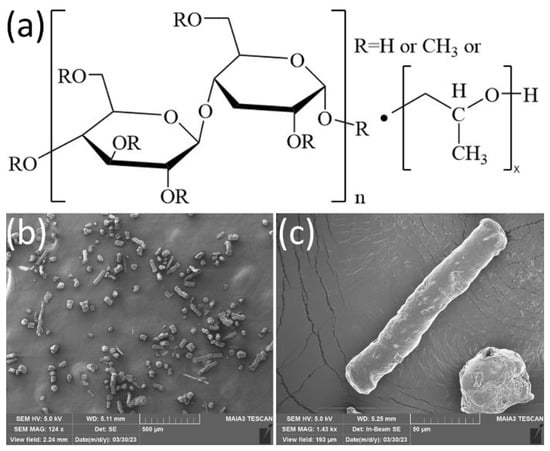
Figure 1
Open AccessArticle
Approach to Determine the Limiting Shear Stress of Lubricants at High Pressures Based on Traction Mapping
by
Zhaoqun Ma, Yan Zhao, Yiming Han, Wenjing Lou, Shuai Li, Xiaobo Wang, Feng Guo and Haichao Liu
Lubricants 2024, 12(4), 128; https://0-doi-org.brum.beds.ac.uk/10.3390/lubricants12040128 - 14 Apr 2024
Abstract
►▼
Show Figures
Typical lubricants behave in a non-Newtonian manner under conditions of high shear and high pressure, as is commonly observed in lubricated rolling/sliding contacts. To optimize and predict the friction therein, knowledge of the high-pressure rheological behaviors of lubricants and limiting shear stress (LSS)
[...] Read more.
Typical lubricants behave in a non-Newtonian manner under conditions of high shear and high pressure, as is commonly observed in lubricated rolling/sliding contacts. To optimize and predict the friction therein, knowledge of the high-pressure rheological behaviors of lubricants and limiting shear stress (LSS) is essential. This study developed an approach for determining the LSS of lubricants based on friction mapping of rolling/sliding contacts, using a ball-on-disc traction machine. The main contribution lies in the introduction of a practical approach for the selection of a proper entrainment velocity for determining the LSS, with reduced thermal influences and near isothermal conditions. The proposed approach enables full film lubrication, while keeping the film as thin as possible to prevent excessive shear heating and, thus, thermal effects. The LSS of two lubricants, PAO40 and complex ester, has been measured at pressures ranging from 1.2 GPa to 1.7 GPa. A bilinear model has been used to describe the variation of LSS with pressure. The impact of entrainment velocity selection on the measurement of LSS is also discussed.
Full article
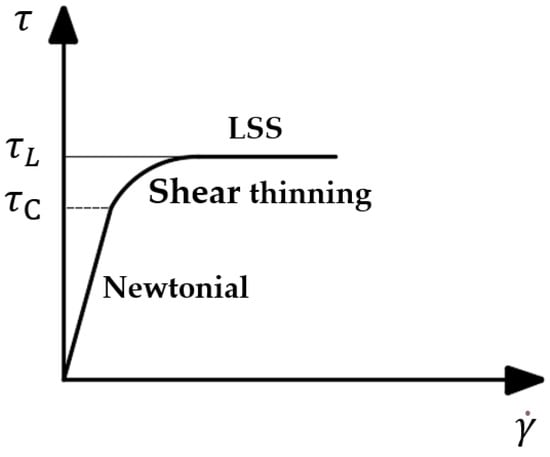
Figure 1
Open AccessArticle
Machine Learning Approach for the Investigation of Metal Ion Concentration on Distillate Marine Diesel Fuels through Feed Forward Neural Networks
by
Ambrosios-Antonios Savvides, Leonidas Papadopoulos, George Intzirtzis and Stamatios Kalligeros
Lubricants 2024, 12(4), 127; https://0-doi-org.brum.beds.ac.uk/10.3390/lubricants12040127 - 14 Apr 2024
Abstract
►▼
Show Figures
In this work, a set of Feed Forward Neural Networks (FNN) for the estimation of the metal ion concentration of diesel fuels is presented. The dataset vector is obtained through in situ measurements from distillate marine diesel fuel storage tanks all over Greece,
[...] Read more.
In this work, a set of Feed Forward Neural Networks (FNN) for the estimation of the metal ion concentration of diesel fuels is presented. The dataset vector is obtained through in situ measurements from distillate marine diesel fuel storage tanks all over Greece, in order to reduce the selection bias. It has been demonstrated that the most correlated ions among them are Aluminum (Al), Barium (Ba) and Calcium (Ca). Moreover, the FNN models are the most reliable models to be used for the model construction under discussion. The initial L2 error is relatively small, in the vicinity of 0.3. However, after removing a small dataset that includes 1–2 data points significantly deviating from the model trend, the error is substantially reduced to 0.05, ensuring the reliability and accuracy of the model. If this dataset is cleared, the estimated error is substantially reduced to 0.05, enhancing the reliability and accuracy of the model. The correlation between the sum of the concentrations of the model in relation with the Density and Viscosity are, respectively, 0.15 and 0.29 which are characterized as weak.
Full article
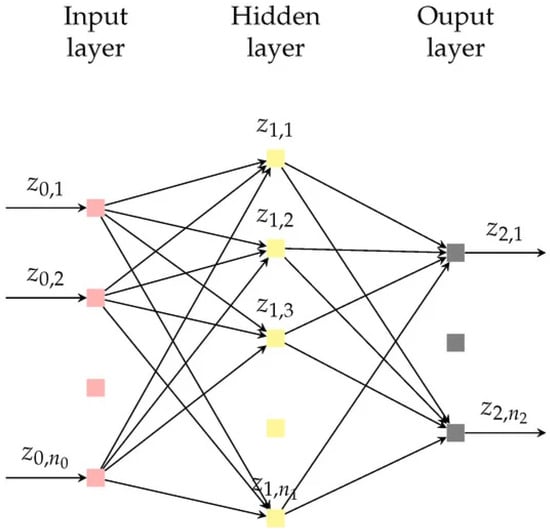
Figure 1
Open AccessReview
Oral Lubrication, Xerostomia, and Advanced Macromolecular Lubricants for Treatment of Dry Mouth
by
William Austin, Maryam Hdeib, Paige Fraser, Maya Goldchtaub, Elika Shams, Tianyi Han, Pierre-Luc Michaud and Vahid Adibnia
Lubricants 2024, 12(4), 126; https://0-doi-org.brum.beds.ac.uk/10.3390/lubricants12040126 - 12 Apr 2024
Abstract
Dry mouth, also known as xerostomia, is a condition in which insufficient or ineffective saliva does not provide sufficient oral lubrication. The severity of this condition can vary from a mild discomfort to a debilitating condition that greatly impairs patients’ lives. Xerostomia arises
[...] Read more.
Dry mouth, also known as xerostomia, is a condition in which insufficient or ineffective saliva does not provide sufficient oral lubrication. The severity of this condition can vary from a mild discomfort to a debilitating condition that greatly impairs patients’ lives. Xerostomia arises as a side effect of various medications, diseases, radiation therapy, chemotherapy, or nerve damage. Various aqueous dispersions of macromolecules have been proposed to assist or replace the saliva in these patients. It is vital that these macromolecules have ample lubricity and water retention properties while showing long-lasting efficacy. The emphasis of this review is to provide a general overview on lubricating macromolecules that have been clinically used or reported in the literature as potential replacements for saliva. These include various natural or synthetic polymers, proteins, peptides, and lipids that are used in the form of solutions, gels, emulsions, and colloids. Perspectives into the future of macromolecular oral lubricants in the treatment of xerostomia are also provided.
Full article
(This article belongs to the Special Issue Advanced Polymeric and Colloidal Lubricants)
►▼
Show Figures
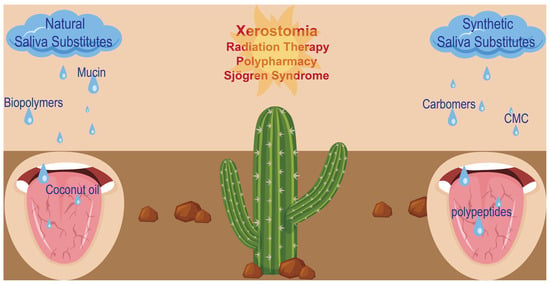
Graphical abstract
Open AccessArticle
Calibration of Oil Film Thickness Acoustic Reflection Coefficient of Bearing under Multiple Temperature Conditions
by
Fei Shang, Bo Sun, Shaofeng Wang, Yongquan Han, Wenjing Liu, Ning Kong, Yuwu Ba, Fengchun Miao and Zhendong Liu
Lubricants 2024, 12(4), 125; https://0-doi-org.brum.beds.ac.uk/10.3390/lubricants12040125 - 07 Apr 2024
Abstract
Rolling mill bearings are prone to wear, erosion, and other damage characteristics due to prolonged exposure to rolling forces. Therefore, regular inspection of rolling mill bearings is necessary. Ultrasonic technology, due to its non-destructive nature, allows for measuring the oil film thickness distribution
[...] Read more.
Rolling mill bearings are prone to wear, erosion, and other damage characteristics due to prolonged exposure to rolling forces. Therefore, regular inspection of rolling mill bearings is necessary. Ultrasonic technology, due to its non-destructive nature, allows for measuring the oil film thickness distribution within the bearing during disassembly. However, during the process of using ultrasonic reflection coefficients to determine the oil film thickness and distribution state of rolling mill bearings, changes in bearing temperature due to prolonged operation can occur. Ultrasonic waves are susceptible to temperature variations, and different temperatures of the measured structure can lead to changes in measurement results, ultimately distorting the results. This paper proposes using density and sound speed compensation methods to address this issue. It simulates and analyzes the oil film reflection coefficients at different temperatures, ultimately confirming the feasibility and effectiveness of this approach. The paper establishes a functional relationship between bearing pressure and reflection coefficients, oil film thickness, and reflection coefficients. This allows for the compensation of reflection coefficients under any pressure conditions, enhancing the accuracy of oil film thickness detection. The proposed method provides technical support for the maintenance of plate rolling processes in the steel industry.
Full article
(This article belongs to the Special Issue Tribological Characteristics of Bearing System, 2nd Edition)
►▼
Show Figures
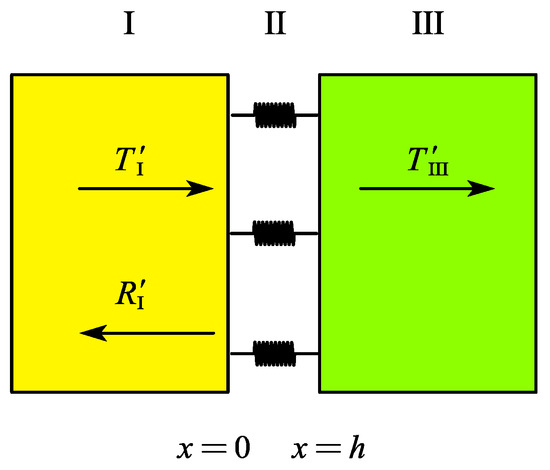
Figure 1
Open AccessArticle
Study on Cage Stability of Solid-Lubricated Angular Contact Ball Bearings in an Ultra-Low Temperature Environment
by
Bing Su, Han Li, Guangtao Zhang, Fengbo Liu and Yongcun Cui
Lubricants 2024, 12(4), 124; https://0-doi-org.brum.beds.ac.uk/10.3390/lubricants12040124 - 07 Apr 2024
Abstract
In the ultra-low temperature environment, the material properties of the bearing change, which puts forward higher requirements for the dynamic performance of the bearing cage. The bearings operating in ultra-low temperature environments commonly use solid lubricants. This study first focused on measuring the
[...] Read more.
In the ultra-low temperature environment, the material properties of the bearing change, which puts forward higher requirements for the dynamic performance of the bearing cage. The bearings operating in ultra-low temperature environments commonly use solid lubricants. This study first focused on measuring the traction coefficients of molybdenum disulfide (MoS2) solid lubricant in a nitrogen atmosphere, and the Gupta fitting model is constructed to derive the traction equation. Subsequently, the dynamic differential equation of angular contact ball bearings was established, and the stability of the bearing cage in a nitrogen environment was simulated and analyzed based on the dynamic model. The accuracy of the simulation model was verified through comparison. The results show that less than 10% of errors exist between the experimental data and the traction curve fitted by the Gupta model, and the stability of the cage is closely related to operating parameters and bearing structure parameters. Cage stability increases with axial load but decreases with radial load. The cage stability is optimal when the radial internal clearance of the bearing is approximately 0.06 mm. When other conditions remain unchanged and the ratio of the cage pocket hole gap to the cage guide surface gap is 0.2, the cage stability is the best. The research results will provide a foundation for the design and application of solid-lubricated angular contact ball bearings in ultra-low temperature environments.
Full article
(This article belongs to the Special Issue Tribological Characteristics of Bearing System, 2nd Edition)
►▼
Show Figures
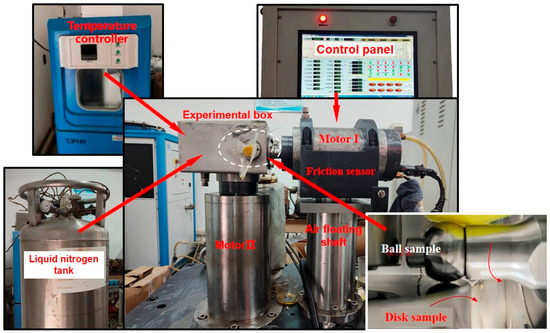
Figure 1
Open AccessArticle
A Study of Water-Based Nanolubricants Using Hexagonal Boron Nitride (hBN)-Based Nanocomposites as Lubricant Additives
by
Afshana Morshed, Hui Wu, Mengyuan Ren, Zhao Xing, Sihai Jiao and Zhengyi Jiang
Lubricants 2024, 12(4), 123; https://0-doi-org.brum.beds.ac.uk/10.3390/lubricants12040123 - 06 Apr 2024
Abstract
An Rtec ball-on-disk tribometer was used to investigate the tribological performance of the synthesised water-based nanolubricants containing hBN/TiO2 nanocomposite at room temperature. The water-based nanolubricants with different concentrations were prepared by adding glycerol and sodium dodecyl benzene sulfonate (SDBS) under ultrasonication. These
[...] Read more.
An Rtec ball-on-disk tribometer was used to investigate the tribological performance of the synthesised water-based nanolubricants containing hBN/TiO2 nanocomposite at room temperature. The water-based nanolubricants with different concentrations were prepared by adding glycerol and sodium dodecyl benzene sulfonate (SDBS) under ultrasonication. These as-prepared nanolubricants demonstrated exceptional dispersion stability for 7 days without distinct sedimentation. The results indicate that the water-based nanolubricants with an overall concentration of 1.0 wt% at different ratios (hBN: TiO2 = (1:0), (0.7:0.3), (0.5:0.5), (0.3:0.7), (0:1)) can effectively reduce the coefficient of friction (COF) and the wear of the ball and disk. In particular, the water-based nanolubricant containing 0.5 wt% hBN and 0.5 wt% TiO2 exhibited the best tribological performance, leading to a significant reduction in COF up to 70%, and decreased the wear area of the ball and disk by up to 79.57% and 60.40%, respectively, compared to those obtained using distilled water. The lubrication mechanisms were mainly attributed to the formation of a protective film, and the mending, polishing, rolling, and synergistic effects of the hBN nanosheets and TiO2 nanoparticles.
Full article
(This article belongs to the Special Issue Tribology in Manufacturing Engineering)
►▼
Show Figures

Figure 1
Open AccessArticle
Extrapolation of Hydrodynamic Pressure in Lubricated Contacts: A Novel Multi-Case Physics-Informed Neural Network Framework
by
Faras Brumand-Poor, Niklas Bauer, Nils Plückhahn, Matteo Thebelt, Silas Woyda and Katharina Schmitz
Lubricants 2024, 12(4), 122; https://0-doi-org.brum.beds.ac.uk/10.3390/lubricants12040122 - 05 Apr 2024
Abstract
►▼
Show Figures
In many technical applications, understanding the behavior of tribological contacts is pivotal for enhancing efficiency and lifetime. Traditional experimental investigations into tribology are often both costly and time-consuming. A more profound insight can be achieved through elastohydrodynamic lubrication (EHL) simulation models, such as
[...] Read more.
In many technical applications, understanding the behavior of tribological contacts is pivotal for enhancing efficiency and lifetime. Traditional experimental investigations into tribology are often both costly and time-consuming. A more profound insight can be achieved through elastohydrodynamic lubrication (EHL) simulation models, such as the ifas-DDS, which determines precise friction calculations in reciprocating pneumatic seals. Similar to other distributed parameter simulations, EHL simulations require a labor-intensive resolution process. Physics-informed neural networks (PINNs) offer an innovative method to expedite the computation of such complex simulations by incorporating the underlying physical equations into the neural network’s parameter optimization process. A hydrodynamic PINN framework has been developed and validated for a variant of the Reynolds equation. This paper elucidates the framework’s capacity to handle multi-case scenarios—utilizing one PINN for various simulations—and its ability to extrapolate solutions beyond a limited training domain. The outcomes demonstrate that PINNs can overcome the typical limitation of neural networks in extrapolating the solution space, showcasing a significant advancement in computational efficiency and model adaptability.
Full article

Figure 1
Open AccessArticle
A Comprehensive Numerical Study of a Wedge-Shaped Textured Convergent Oil Film Gap
by
Raphael Scharf, Michael Maier, Michael Pusterhofer and Florian Grün
Lubricants 2024, 12(4), 121; https://0-doi-org.brum.beds.ac.uk/10.3390/lubricants12040121 - 05 Apr 2024
Abstract
The modification of surface geometries to reduce friction is an omnipresent topic of research. In nature, different low-friction surfaces, such as fish skins, exist. To transfer this knowledge to technical applications, for example, to journal or plain bearings, many numerical and experimental studies
[...] Read more.
The modification of surface geometries to reduce friction is an omnipresent topic of research. In nature, different low-friction surfaces, such as fish skins, exist. To transfer this knowledge to technical applications, for example, to journal or plain bearings, many numerical and experimental studies of textured surfaces have been performed. In this work, the influence of the geometric parameters (texture length
(This article belongs to the Special Issue Tribology of Textured Surfaces)
►▼
Show Figures
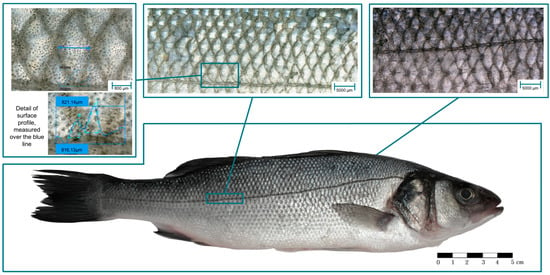
Figure 1
Highly Accessed Articles
Latest Books
E-Mail Alert
News
Topics
Topic in
JFB, JMMP, Lubricants, Machines, Materials
Advanced Manufacturing and Surface Technology
Topic Editors: Dingding Xiang, Junying Hao, Xudong Sui, Kaiming WangDeadline: 30 December 2024

Conferences
Special Issues
Special Issue in
Lubricants
Tribology of 2D Nanomaterials
Guest Editors: Yanfei Liu, Xiangyu GeDeadline: 30 April 2024
Special Issue in
Lubricants
New Technologies to Improve Machining Performance from a Tribological Viewpoint
Guest Editors: Carlos Eiji Hirata Ventura, Alexandre Mendes AbrãoDeadline: 15 May 2024
Special Issue in
Lubricants
Advances in Water-Based Nanolubricants
Guest Editors: Hui Wu, Pradeep MenezesDeadline: 31 May 2024
Special Issue in
Lubricants
Acoustic Emission Techniques in Wear Monitoring II
Guest Editor: Alan HaseDeadline: 20 June 2024
Topical Collections
Topical Collection in
Lubricants
Rising Stars in Tribological Research
Collection Editor: Max Marian






